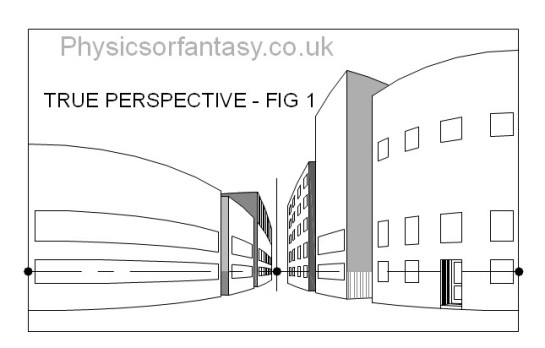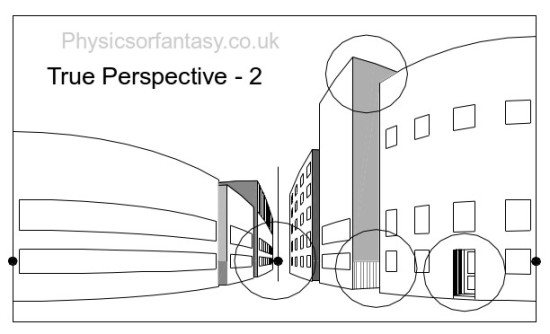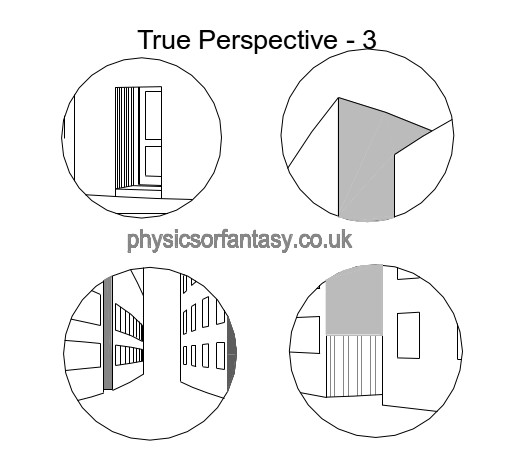-
The Mechanics of True Perspective.
Posted on July 25th, 2014 No commentsINTRODUCTION.
Throughout known history man has produced pictorial representations of his environment, from the earliest cave paintings of animals, hunting scenes, weapons, & man, through to the masterpieces of the great painters of the renaissance. Bearing in mind the wide variations in artistic talents of the general population of today, and considering the extremely low population of early man, one is tempted to conclude that early man had a greater artistic capability. Many cave painting have great technical assurance, and considering the severe circumstances in which they were produced, would indicate an enthusiasm beyond that of most artists. Produced on rough rock faces, using charcoal or home-made dyes, applied with sticks, fingers etc., carried out in semi-darkness by the light of guttering torches, and in an atmosphere full of smoke, it is doubtful that many of our great painters could have done better in the same circumstances.
If these same cave painters had sable brushes, stretched canvases, and the wide variety of painting media that we have today, they would be world famous artists. It is sad to consider that their greatest works would have been done outside the caves, in more congenial circumstances, but these would have been destroyed by weather and erosion.
It is clear that these cave painters understood the importance of perspective, demonstrated in many of the their paintings. Even the artists of ancient Egypt, often unjustly accused of not being able to ‘draw properly’ (See later note.), understood the basic requirements of perspective.
The technical aspects of perspective were intensively studied during the renaissance, and in fact our present systems of perspective show no improvement on these early studies.
I first became interested in perspective whilst a student at Bolton Municipal College of Art, where, having a keen interest in mechanics as well as art, I was intrigued by the apparent incompatibility between the art of perspective and the mechanics of perspective as given in all the text books on the subject.
One of the points that emerged from my later research was the practical incompatibility of the art of perspective, with the mechanics of perspective. This will become apparent as we continue.
A further point relates to what in many cases are referred to as ‘ optical illusions’, or faults in our eye or brain. In fact, many of these are accurate assessments of the information (in the form of light) that is arriving at the eye.
Note: – The stylised ‘side only’ drawings on most Egyptian artefacts were certainly not created due to any lack of ability to draw full frontal or angled drawings. The artists’ abilities are clearly demonstrated by the large number of superb statues, masks etc. in existence. There are also full frontal drawings in existence that were patterns for statues. There are various possible reasons for the stylised form of art;
a. Economy. It is easier to draw figures in this way, and the large numbers of figures in most tombs etc. would made this an economic method of drawing.
b. Suitability. Most figures are carrying out some form of activity. It is easier to show these activities in a side view rather than a full frontal or angled view. This style of drawing figures is often used in instruction manuals today.
c. Labour. It is unlikely that the master artist carried out all the paintings, therefore numerous other artists or semi-skilled technicians would have carried out the work. ‘Patterns’ would be used for guidance by these ‘auxiliary’ artists.
d. Style. More realistic drawings methods would lose much of the important aspect of the drawings, i.e. they are primarily a means of recording messages. Every picture has clarity of meaning, even if the picture is not truly realistic.
——————————————————
True Perspective.
The simple drawing below is of a group of buildings. This is actually what you see, even though you will initially argue against my statement.

Let us look at Fig.2 which shows four areas to consider.

Let us now look at these areas in isolation.

Looked at in isolation, as happens with the human eye’s small area of high definition, I think you will agree that they do not seem to be particularly distorted.
Normal Methods used in Perspective.
Author – Brian Williams
Much more to come on this subject.

